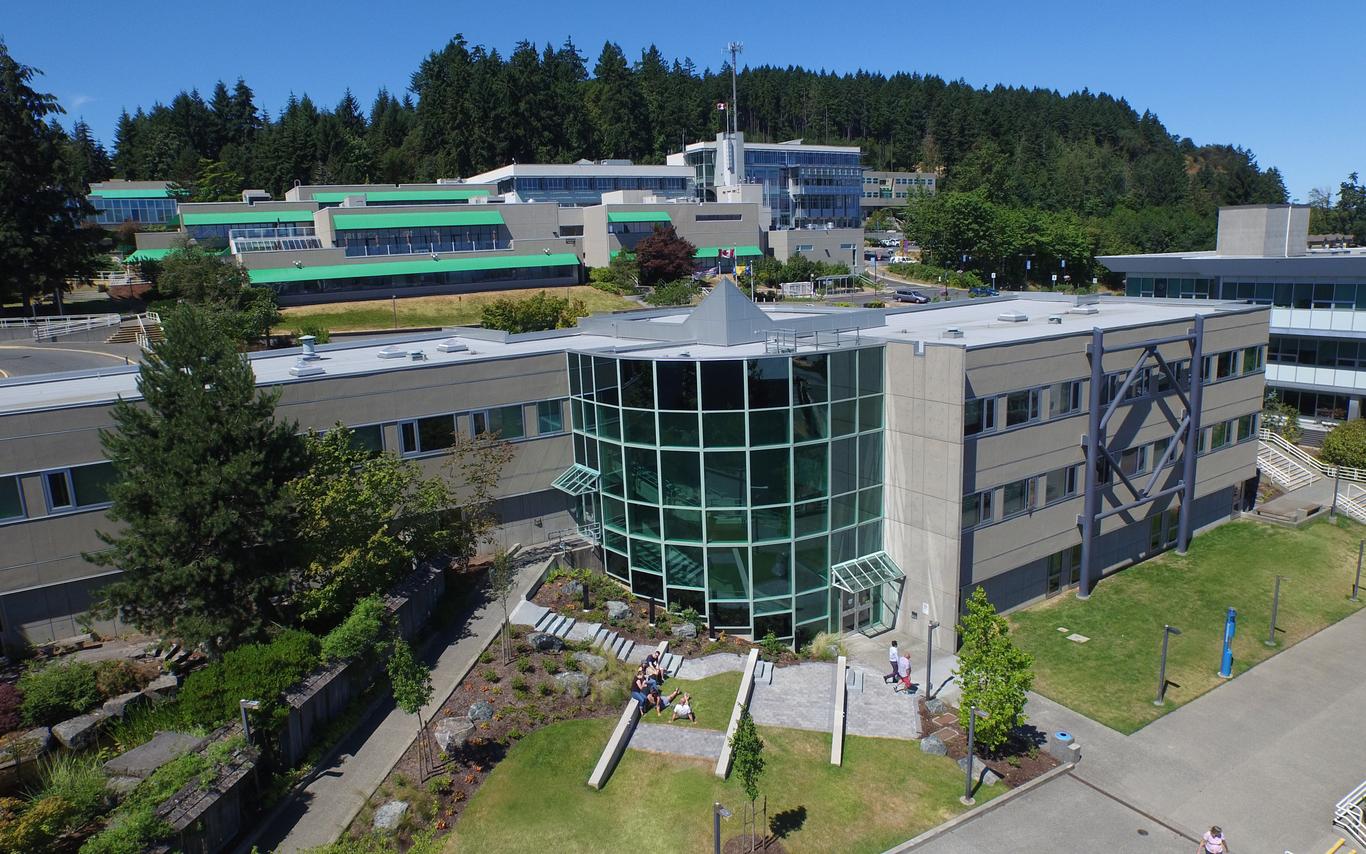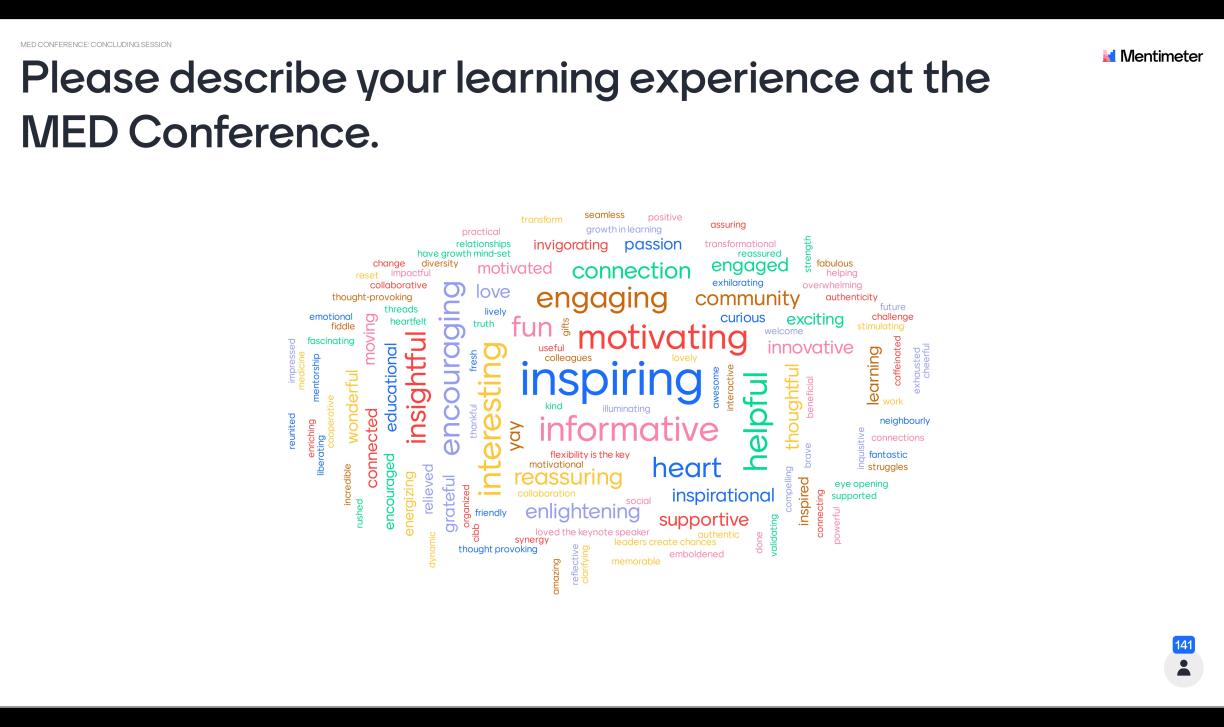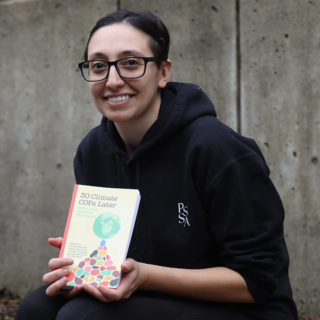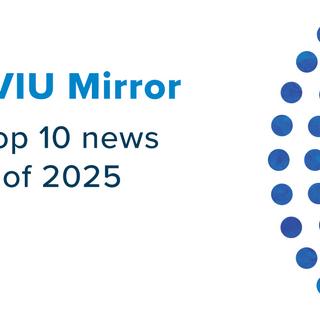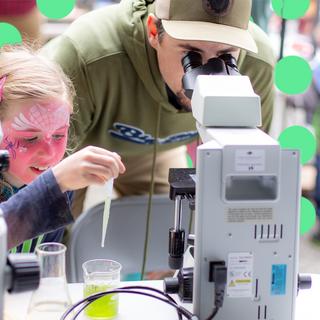Each spring Dr. Rachel Moll, Associate Dean of the Faculty of Education, organizes and hosts the MED Research Conference so second-year VIU Master of Education (M.Ed) students who are working on their theses can share their work. It also provides first-year M.Ed students a chance to learn from the presentations as they develop their research proposals. The opportunity to present at the conference has become an integral part of the M.Ed program as students hone their presentation skills and develop their ability to expertly discuss their research. This meant that the conference had to go on, in spite of a global pandemic, and the movement to an online format led to some benefits for both presenters and attendees. This year, the 10th annual event, more than 250 people participated, making it one of the largest events Moll has hosted. She shared some of her successes and learnings and celebrated the work of the M.Ed students.
1) From the tag cloud on your wordpress, I can see there were many different topics covered and thoughtful discussion given to those topics. How were attendees able to choose their topics? How did this differ from an in-person model?
I design the conference to allow for some choice, while ensuring that all sessions have enough audience members. Using a website called Bookwhen, the sessions are listed with information such as the title, methods used, and an abstract for each presentation and attendees can book the sessions they want to attend. With this software I can control the number of people who can choose any session. I give presenters the first choice (since they only have one available timeslot to choose a session). Then attendees get to choose. If attendees do not choose sessions, they are placed in sessions and provided with a schedule by email with the Zoom links for their session. Our in-person model was similar – conference presenters and attendees chose their sessions in advance using Bookwhen and received a printout of their schedule when they checked in at the registration desk.
2) Given that the format of the conference had to be so different from before, what was your definition of success for 2021?
Success looked like sessions running smoothly and excellent attendance at the synchronous events. Active engagement on the blog where asynchronous work was presented was also an indicator of success.
3) When you realized you were going to have to move the conference online, what went through your mind? Why did you feel it was still important to have it?
The conference has become an integral part of our program and I didn’t want any of the students to miss out. Plus, I had a whole year to figure it out! For years I have been trying to encourage students who don’t live locally to present virtually but have not had much luck. Running the conference online was a wonderful opportunity for the conference to become more inclusive of our programs that run online and at a distance.
4) What were some of the best outcomes?
Since many students had created videos or artifacts for asynchronous presentations, they also submitted them to CREATE and won awards! Creating artifacts such as videos or posters allows students to have something they can use for future knowledge mobilization efforts. For example, M.ED Leadership student Ryan West won VIU’s 3 Min Thesis competition and will go on to represent VIU at BC’s regional event. Ryan is a Master of Education in Educational Leadership student who is in our Distance program studying from his home in Old Crow, NWT.
5) What were the best learnings? Good/not-so-good?
We all learned a lot about different technologies and sharing work online including how to set up the blog, respond to comments, proper Zoom etiquette and video streaming. However, there were far too many emails required to ensure everyone was informed at every step of the process. I had splendid technical support from CIEL who helped me troubleshoot all the zoom events I created and who were there to ensure that there were no technical issues on the day. With 60 presenters, 30 faculty moderators, 250 attendees and over 20 zoom events, it was quite a feat to have everything running smoothly. I appreciated all the help I received from faculty, staff and supervisors to run the event.
6) Comparing the in-person model with the online model, what do you hope to take with you from the online model into years when we can all be together in person again?
There are a couple of huge advantages to the online format. One limitation of the in-person conference has always been a lecture hall large enough to hold all the attendees for the keynote as we have never been able to book the theatre. With the online conference all 250 attendees were able to experience our wonderful keynote from Monique Gray-Smith. Secondly the inclusive model allowed for many more students to both attend and present at the conference. However, for some student groups, there was less participation as presenting virtually did not appeal to some. I would like to maintain the asynchronous presentation format – it was an ideal way to be inclusive, and allows for many more presenters than I could accommodate in the in-person event. This year we created ‘Ask me Anything Mentors’. Mentors wrote a blog post about their research and what they had learned. They then invited questions and conversation from other students at different stages of their research. I’d like to preserve this aspect of the conference, perhaps with both online and in-person opportunities for mentoring.
7) How were students/attendees able to connect casually during the conference?
I did not manage to provide a good way for casual connections to occur synchronously, however students connected and supported one another through commenting and discussion on the blog for the week before the conference. I had one set of Zoom breakout rooms that were meant to be more casual with asynchronous presenters present to answer questions, and attendees coming in, choosing a breakout room and going in to talk to an asynchronous presenter. The session was very well-attended with so many joining that we had to make the session more structured than we had intended, which made it less conversational. It was difficult to assign everyone to breakout rooms as many couldn’t choose a breakout room with their version of Zoom. I would like to improve this in the future.
8) Can you share a little bit about the conference subject matter? Which sessions were most exciting? As the organizer, how did you choose presenters?
The design of the conference program begins in December when second year students are invited to register to present and choose their top three choices for presentation format. All students who want to present are accepted, but they don’t all get their choice of presentation format. With the list of all the presenters, I start to design the conference program by grouping topics that complement each other, while also providing variety (i.e. sessions with students from multiple programs). While students may use similar research methods such as surveys, the topics and areas of interest are wide-ranging. This year the topics included: trauma informed practice, Indigenous perspectives in education, inclusion, teacher effectiveness, motivation, and much more!
9) Why is this important for the students? How does being able to present their work factor into their educational experience?
The conference is very important for both the students who are presenting their work, and the attendees who are still learning research methods. The presenting students fulfill a graduate program expectation of engaging in knowledge mobilization. Participating as a presenter provides a deadline to get at least preliminary data analysis completed. Most students say that participating in the conference moves their work forward as they refine, summarize and get feedback on their work. It is very important that the first year students get to see what is possible in the thesis or project component of the program. The research conference is as much an opportunity to learn about research as it is to learn about the important results that have emerged from the research work.
